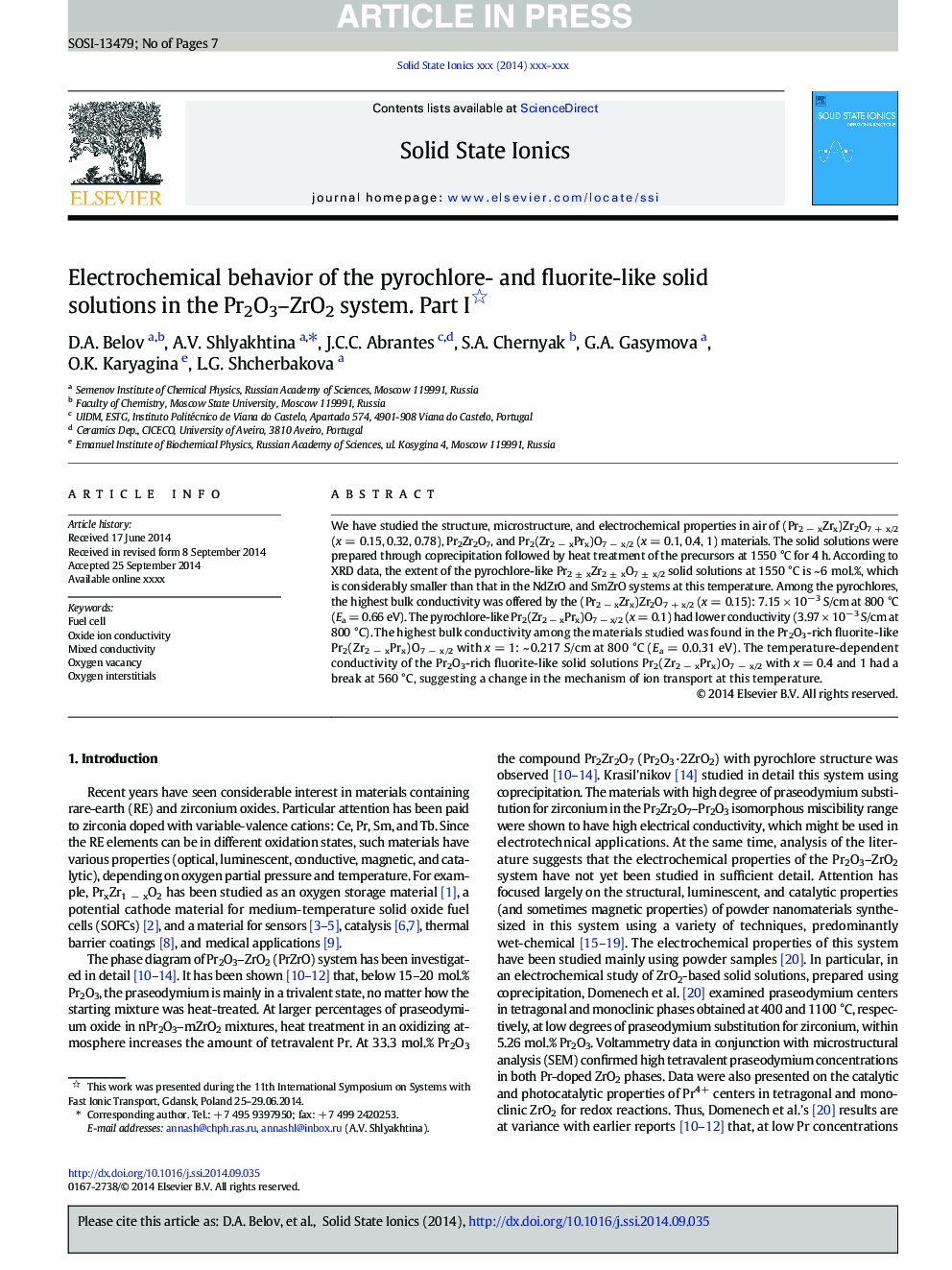| Article ID | Journal | Published Year | Pages | File Type |
|---|---|---|---|---|
| 7745802 | Solid State Ionics | 2015 | 7 Pages |
Abstract
We have studied the structure, microstructure, and electrochemical properties in air of (Pr2 â xZrx)Zr2O7 + x/2 (x = 0.15, 0.32, 0.78), Pr2Zr2O7, and Pr2(Zr2 â xPrx)O7 â x/2 (x = 0.1, 0.4, 1) materials. The solid solutions were prepared through coprecipitation followed by heat treatment of the precursors at 1550 °C for 4 h. According to XRD data, the extent of the pyrochlore-like Pr2 ± xZr2 ± xO7 ± x/2 solid solutions at 1550 °C is ~ 6 mol.%, which is considerably smaller than that in the NdZrO and SmZrO systems at this temperature. Among the pyrochlores, the highest bulk conductivity was offered by the (Pr2 â xZrx)Zr2O7 + x/2 (x = 0.15): 7.15 Ã 10â 3 S/cm at 800 °C (Ea = 0.66 eV). The pyrochlore-like Pr2(Zr2 â xPrx)O7 â x/2 (x = 0.1) had lower conductivity (3.97 Ã 10â 3 S/cm at 800 °C). The highest bulk conductivity among the materials studied was found in the Pr2O3-rich fluorite-like Pr2(Zr2 â xPrx)O7 â x/2 with x = 1: ~ 0.217 S/cm at 800 °C (Ea = 0.0.31 eV). The temperature-dependent conductivity of the Pr2O3-rich fluorite-like solid solutions Pr2(Zr2 â xPrx)O7 â x/2 with x = 0.4 and 1 had a break at 560 °C, suggesting a change in the mechanism of ion transport at this temperature.
Related Topics
Physical Sciences and Engineering
Chemistry
Electrochemistry
Authors
D.A. Belov, A.V. Shlyakhtina, J.C.C. Abrantes, S.A. Chernyak, G.A. Gasymova, O.K. Karyagina, L.G. Shcherbakova,
